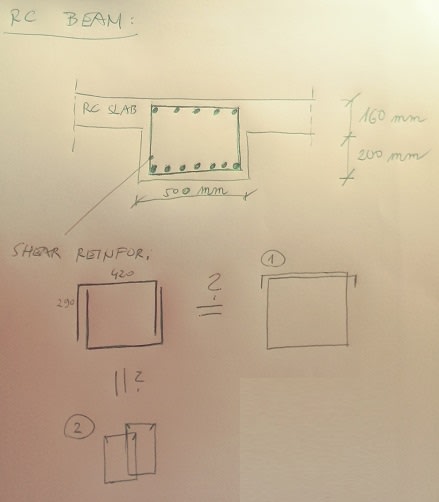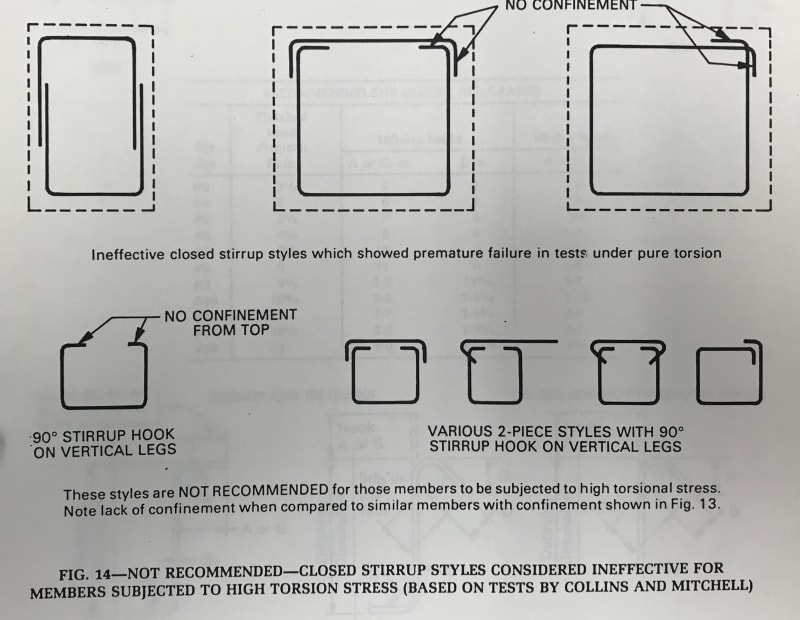mats12
Geotechnical
- Dec 17, 2016
- 181
Hi, I have a question about shear reinforcement of RC beam.
I found a project where shear reinforcement of beam consists of 2 U shaped bars. I wonder is this even OK since this bars should be in tension but they are short - I know they overlap but still? Is this kind of detail more like traditional shear reinforcement with 2 legs (2 bars in tension) - marked as (1) in attached image or more like (2) - 4 bars in tension (4 legs)?

I found a project where shear reinforcement of beam consists of 2 U shaped bars. I wonder is this even OK since this bars should be in tension but they are short - I know they overlap but still? Is this kind of detail more like traditional shear reinforcement with 2 legs (2 bars in tension) - marked as (1) in attached image or more like (2) - 4 bars in tension (4 legs)?


